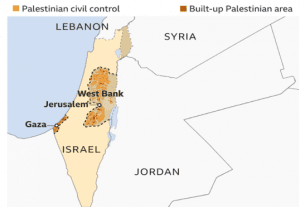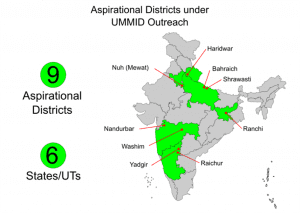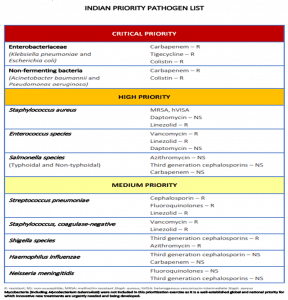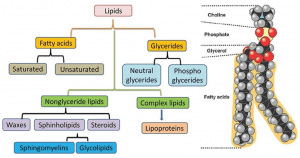1. THE GIR COW
TAG: GS 3: AGRICULTURE
THE CONTEXT: Under the Rashtriya Gokul Mission, only the Gir indigenous cow breed is being promoted.
WHY GIR IS BEING PROMOTED UNDER RGM:
- There are a number of reasons why only the Gir indigenous cow breed is being promoted under the Rashtriya Gokul Mission (RGM).
- High milk yield:
- The Gir cow is known for its high milk yield, which can reach up to 18-20 liters per day.
- It one of the most productive indigenous cow breeds in India.
- Hardiness:
- The Gir cow is a very hardy breed and is well-suited to the harsh climatic conditions of India.
- It is also resistant to a number of diseases.
- Adaptability:
- The Gir cow is also very adaptable to different climates and feed conditions.
- This makes it a good choice for farmers in different parts of India.
- Demand:
-
- There is a high demand for Gir milk and Gir cattle in India and abroad.
- So, it a profitable breed for farmers to raise.
- The RGM is focused on increasing milk production and improving the income of farmers.
- The promotion of the Gir cow breed is seen as one of the most effective ways to achieve these goals.
DRAWBACKS OF PROMOTING ONLY GIR COW UNDER RGM:
- Reduced adaptability:
- The Gir cow is a breed that is well-suited to the climate of Gujarat, but it may not be as well-suited to other parts of India.
- This could lead to problems for farmers who raise Gir cows in areas where the climate is different.
- Increased susceptibility to diseases:
- The Gir cow is more susceptible to certain diseases, such as foot-and-mouth disease and lumpy skin disease.
- This could increase the cost of raising Gir cows and make farmers more vulnerable to losses.
- Reduced genetic diversity:
-
- The promotion of a single breed of cow can lead to a decrease in genetic diversity.
- It will make the cattle population more vulnerable to diseases and pests.
RASHTRIYA GOKUL MISSION (RGM):
- It is under the ambit of Ministry of Fisheries, Animal Husbandry and Dairying.
- RGM is being implemented for development and conservation of indigenous bovine breeds since December 2014.
- The scheme is important in enhancing milk production and productivity of bovines to meet growing demand of milk and making dairying more remunerative to the rural farmers of the country.
- The scheme is also continued under umbrella scheme Rashtriya Pashudhan Vikas Yojna from 2021 to 2026 with a budget outlay of Rs.2400 crore.
- The RGM will result in enhanced productivity and benefit of the programme, percolating to all cattle and buffaloes of India especially with small and marginal farmers.
- This programme will also benefit women in particular since over 70% of the work involved in livestock farming is undertaken by women.
OBJECTIVES OF THE RGM:
- To enhance productivity of bovines and increasing milk production in a sustainable manner using advance technologies.
- To propagate use of high genetic merit bulls for breeding purposes.
- To enhance Artificial insemination coverage through strengthening breeding network and delivery of Artificial insemination services at farmers doorstep.
- To promote indigenous cattle & buffalo rearing and conservation in a scientific and holistic manner.
COMPONENTS OF RGM:
- Availability of High genetic Merit Germplasm
- Bull Production Programme
- Support to semen stations: Strengthening of existing semen stations.
- Implementation of IVF Technology
- Breed Multiplication Farms
- Extension of Artificial Insemination Network
- Nationwide AI programme
- Using sex sorted semen for getting assured pregnancy
- Implementation of National Digital Livestock Mission (Livestack)
- Skill Development
- Farmers Awareness
- Research Development and Innovation in Bovine Breeding
- Development and Conservation of indigenous Breeds
- Assistance to Gaushalas, Gosadans and Pinjarapoles
- Administrative expenditure/ operation of Rashtriya Kamdhenu Aayog
SOURCE: https://www.downtoearth.org.in/news/agriculture/only-the-gir-indigenous-cow-breed-is-being-promoted-under-rashtriya-gokul-mission-here-is-why-92366
2. AUTOMATED PERMANENT ACADEMIC ACCOUNT REGISTRY (APAAR)
TAG: GS 2: GOVERNANCE
THE CONTEXT: To create the Automated Permanent Academic Account Registry (APAAR), a new student identity card, state governments requested schools to seek parental consent.
EXPLANATION:
- It is a part of the ‘One nation, One Student ID’ initiative of the Union government, stemming from the new National Education Policy of 2020.
WHAT IS THE PURPOSE OF APAAR?
- It is envisioned as a special ID system for all students in India, starting from childhood.
- Under the initiative, each student would get a lifelong APAAR ID, making it easy for the learners, schools, and governments to track academic progress from pre-primary education to higher education.
- It would also serve as a gateway to Digilocker, a digital system where students can store their important documents and achievements, and use them in the future for, say, pursuing higher education or finding a job.
WHAT IS THE NEED TO INTRODUCE?
- The goal behind introducing APAAR is to make education hassle-free and reduce the need for students to carry physical documents.
- This initiative was launched as part of the National Education Policy 2020 by the Education Ministry.
- The vision is to create a positive change, allowing state governments to track literacy rates, dropout rates, and more, helping them make improvements.
- APAAR also aims to reduce fraud and duplicate educational certificates by providing a single, trusted reference for educational institutions.
- Only first party sources that issue certificates will be allowed to deposit credits into the system, ensuring authenticity.
HOW DOES THE GOVERNMENT ENVISION APAAR ID TO WORK?
- Every individual will have a unique APAAR ID, which will be linked to the Academic Bank Credit (ABC), which is a digital storehouse that contains information of the credits earned by students throughout their learning journey.
- With the APAAR ID, students would be able to store all their certificates and credits, whether they come from formal education or informal learning.
- When a student completes a course or achieves something, it’s digitally certified and securely stored in her account by authorised institutions.
- If the student changes schools, whether within the state or to another state, all her data in the ABC gets transferred to her new school just by sharing the APAAR ID. No need to provide physical documents or transfer certificates.
CONCERNS REGARDING APAAR:
- Parents and students have concerns about sharing their Aadhar details because they worry that their personal information could be leaked to outside parties.
- The government says that the information shared by students will be kept confidential.
- It will not be shared with any third party except for entities engaged in educational activities, such as the Unified District Information System for Education Plus or the UDISE+ database.
- It is the government’s catalogue that contains data related to schools, teachers and students, scholarships, maintenance academic records, educational institutions and recruitment agencies.
- At any given time, students have the option to stop sharing their information with the mentioned parties, and their data processing will be halted.
- However, any personal data already processed will remain unaffected if consent is withdrawn.
SOURCE: https://indianexpress.com/article/explained/one-nation-one-student-id-apaar-explained-9000086/
3. ANAMALAI TIGER RESERVE (ATR)
TAG: GS 3: ENVIRONMENT AND ECOLOGY
THE CONTEXT: A committee headed by Anamalai Tiger Reserve (ATR) field director visited the enclosure at the Manthirimattam reserve forest area of the Manamobolly forest range to assess the progress of the rewilding of a sub-adult tiger.
EXPLANATION:
- The committee assessed the health of the tiger and analysed CCTV footage to know the hunting talents of the sub-adult tiger.
- The committee also discussed:
- The selection of sites where the tiger could be released in future,
- The fixing of a radio-collar during the release of the tiger, and
- Constituting a squad to monitor the animal after its release.
- The tiger was rescued from a tea estate near Valparai in September 2021.
- It is claimed that the committee would submit a detailed report to the Chief Wildlife Warden, after which a decision will be taken on releasing the animal into the wild.
WHAT IS REWILDING?
- Rewilding is a conservation strategy used to promote biodiversity in ecosystems by reintroducing plant and animal species that have been driven out, largely due to humans.
- Bringing these species back into a certain environment can help struggling ecosystems self-regulate and return to their natural processes.
- For many conservationists, or those who work to protect and preserve the natural environment, rewilding is as much an activity of the heart as of the land.
ANAMALAI TIGER RESERVE (ATR):
- Anamalai Tiger Reserve was declared as a Tiger reserve in the year 2007.
- There are two Divisions and six ranges in this Reserve.
- The ranges found in this reserve include Amaravathi and Udumalpet falling in Thiruppur Division and Pollachi, Ulandy, Valparai and Manamboli in Pollachi Division.
- It is located on the southern side of the South Western Ghat landscape.
- It is surrounded by Parambikulum Tiger Reserve on the East, Chinnar Wildlife Sanctuary and Eravikulum National Park on the South Western side.
- The reserve is also surrounded by Nenmara, Vazhachal, Malayattur and Marayur reserved forests of Kerala.
- The Kariyan shola, Grass hills and Manjampatti of Anamalai Tiger Reserve has been identified as a world heritage site by the UNESCO.
FLORA:
- Around 2500 species of angiosperms are found in the Anamalai Tiger Reserve, with several species of Balsam, Crotalaria, Orchids and Kurinchi.
- The reserve is rich in wild relatives of cultivated species like mango, jackfruit, wild plantain etc.
FAUNA:
- The reserve supports several species of endangered wild animals.
- There are 70 species of fishes, more than 70 species of amphibians, 120 species of reptiles, 300 species of birds and 80 species of mammals.
- The important mammals include: Asiatic elephant, Sambar, Spotted deer, Barking deer, Mouse deer, Gaur, Nilgiri tahr etc.
SOURCE: https://www.thehindu.com/news/national/tamil-nadu/committee-assesses-progress-of-tamil-nadus-first-tiger-rewilding-programme/article67462247.ece/amp/
4. GREEN HYDROGEN
TAG: GS 3: ENVIRONMENT AND ECOLOGY
THE CONTEXT: As per a study by environmental and energy think-tank, Climate Risk Horizons (CRH), India’s plans to produce ‘green hydrogen’ might end up worsening pollution if proper checks and balances are not in place.
EXPLANATION:
- India’s National Green Hydrogen Mission, piloted by the Ministry of New and Renewable Energy (MNRE) expects to manufacture five million tonnes by 2030.
- It would require the installation of renewable energy capacity worth 125 GW and the use of 250,000 gigawatt-hr units of power, equivalent to about 13% of India’s present electricity generation.
- As of August 2023, India’s total renewable energy (RE) capacity (excluding hydropower dams bigger than 25 MW) stood at 131 GW; the 2030 green hydrogen plan thus envisages adding an equivalent RE capacity by 2030.
- This is over and above the 500 GW of RE capacity that India has committed to install by 2030 as part of its Nationally Determined Contribution under the Paris Agreement.
- India installed only 15 GW of new solar and wind capacity in 2023, against the 45 GW per year needed to reach the 2030 target.
COAL-BASED POWER USAGE:
- The MNRE has defined green hydrogen as hydrogen produced in a way that emits no more than 2 kg of carbon dioxide per kg of such hydrogen.
- Currently, producing 1 kg of ‘grey hydrogen’ ends up emitting 9 kg of carbon dioxide.
- The main concern is that if electrolysers, which split water to produce hydrogen and oxygen, were run 24×7, they would be expected to operate even at night when no solar power is available.
- This would then mean tapping into conventional coal-fired electricity.
- If electricity comes from India’s coal-powered grid in general, it will increase carbon emissions, since about 70% of the electricity on the grid is coal.
- Most projects have not disclosed their source of electricity. It is also not clear if those few projects that have committed to meet 100% of their requirement from these sources.
COSTLY DIVERSION:
- Another challenge is that India’s standards allow the use of biomass which also results in carbon emissions when burnt for the production of green hydrogen.
- Moreover, diverting scarce renewable energy capacity towards the production of green hydrogen might mean inadequate clean electricity being made available for consumers.
- India’s ambitious renewable energy target of 450 GW by 2030 already requires huge investment.
- The green hydrogen mission will require an additional 125 GW of RE.
- The MNRE needs to guard against the risk that finance for RE projects that would otherwise decarbonise the electricity grid will instead be diverted to produce green hydrogen.
- This would delay India’s journey to net zero, undermine a nascent industry, and deny States and electricity consumers the cost benefits that cheap renewable energy has to offer.
- Several large power utilities in India have announced ambitious plans to scale up green hydrogen production.
- The Centre’s green hydrogen mission has committed nearly ₹20,000 crore to develop and expand the industry.
SOURCE: https://www.thehindu.com/sci-tech/energy-and-environment/indias-green-hydrogen-mission-runs-risk-of-pollution-sans-accounting-study/article67462156.ece
5. REFERENCE FUEL
TAG: GS 3: ECONOMY, GS 3: SCIENCE AND TECHNOLOGY
THE CONTEXT: Indian Oil launches country’s first reference fuel.
EXPLANATION:
- The Indian Oil Corporation Limited (IOCL) launched India’s first gasoline and diesel reference fuels to meet the demand of the country.
- These fuels have higher specifications, are critical for calibrating and testing by automobile manufacturers and testing agencies like the International Centre for Automotive Technology (ICAT) and the Automotive Research Association of India.
- These reference fuels are used by automobile manufacturers for testing vehicles and ensuring their operability under various global climatic conditions.
- These are essential for the development of engines and the assessment of vehicle performance.
- These reference fuels are required by automobile manufacturers to meet international benchmarks.
REDUCING DEPENDENCE ON IMPORTS:
- India has relied on imports for decades to meet the demand for these specialized fuels. These indigenously developed products will replace imports ensuring a reliable supply at lower cost for vehicle manufacturers and testing agencies.
- The production of these specialized reference fuels by Indian Oil aims to reduce India’s dependence on imports from European and US companies.
DOMESTIC DEMAND AND EXPORT POTENTIAL:
- The current demand for gasoline reference fuel in India is approximately 120 kilo litre (KL) per annum, while the demand for diesel reference fuel is around 15 KL per annum.
- Indian Oil intends to fully meet the domestic demand and also explore the possibility of exporting these fuels in the future by expanding its production capacity.
GOVERNMENT’S VISION:
- The production of these reference fuels aligns with the Indian government’s vision of “AtmaNirbhar Bharat” or self-reliant India, as promoted by Prime Minister Narendra Modi.
- It signifies a step toward reducing reliance on imports and enhancing domestic capabilities.
SOURCE: https://www.moneycontrol.com/news/business/indian-oil-launches-countrys-first-reference-fuel-to-fully-meet-domestic-demand-11604911.html





